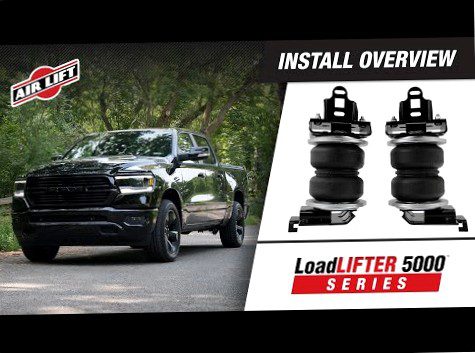
Air Ride Suspensions are incredibly versatile suspension systems that are selected for many different vehicles. Trucks and SUVs carrying heavy loads often use variable air suspension struts to balance the load and maintain the correct ride height when depressed. Air-ride suspensions are also used in special vehicles that lower the vehicle at will, but still maintain a normal ride height. They can even be used in the average car to give it a smoother ride.
All types of air suspensions are fairly similar, even across a wide range of vehicles in which they are used. These air systems typically include an altitude sensor, an air bag and air strut, a compressor and air lines.
This article discusses the installation of the most commonly used air suspension system.
Part 1 of 2: Removing the old components
Required materials
- Basic tool kit
- Sockets and ratchet
- Air suspension kit
- Eye protection
- Jack
- Jack stands on
- Warning: Air ride systems use high pressure air. Always wear proper eye protection and protective equipment when working with air ride systems.
Step 1: Prepare the vehicle. Wear eye protection, use the jack to lift the vehicle and secure it to the jack stands. Then remove the tires.
Step 2: Remove the coil spring and the front struts. Determine if the air suspension is straight back or if the kit is front and back.
If the front is to be addressed, remove the front struts from the car according to the kit instructions.
The rear coil springs should be removed if the rear air springs are to be installed.
Step 3: Get ready to install air ride suspension. If the kit being installed uses a compressor, it is most often installed in the spare wheel bowl.
Remove the spare tire and any interior panels to make room for the compressor in the trunk.
Part 2 of 2: Installing the Air Suspension
Step 1: Install the rear air spring. Install the rear air spring or rear coil in place of the previous spring.
Air suspension supports the weight of the vehicle once installation is complete.
Step 2: Install the front air struts. Front air struts are installed in place of the previous front air struts.
These support the weight of the front of the vehicle once the installation is complete.
- Note: Depending on the make, model and suspension type, there are many different styles and setups for front air struts.
Step 3: Install the air compressor and air tank. The air compressor and air tank are usually installed in the vehicle's spare tire well.
Each air suspension kit includes specific instructions on where to install them.
- Note: The compressor fills the air tank with compressed air, which allows the air suspension to be lowered and raised. The compressor holds various amounts of air, usually three to five gallons, depending on the vehicle size and weight.
Step 4: Wire the compressor for air and power. The air compressor must be supplied with power.
Generally, this wiring is routed through a relay and fuse, then to battery power.
Each corner of the vehicle requires its own airline, which is then driven to the compressor. These air lines need to be under the vehicle so they don't bend and break while driving. The lines are attached to the compressor so that the air suspension can be controlled.
Step 5: Perform a final check of installation and setup. Look over the installation and make sure all components are tight.
Most air systems also need to be cycled a few times and checked for proper operation. Each kit has a slightly different setup and testing procedure. Therefore, follow the specific instructions in your manual.
Operate the air suspension to confirm that the vehicle is at the proper ride height. This may require some adjustments.
Lastly, the air suspension should be checked for leaks before you drive it.
- Warning: air suspension systems require additional maintenance and repairs as needed. Modifying the suspension can affect the vehicle's handling characteristics and void any warranty.
Air suspension can be a helpful addition to your vehicle, whether to support a load or improve how a vehicle drives. If questions arise at any time during the installation process, you can always ask a mechanic for quick, detailed advice. If you don't feel confident enough to work on it yourself, qualified technicians from Vermin-Club can help you with any repairs, replacements, or other services related to your suspension.
Insurance requirements for car registration in South Dakota
All drivers in South Dakota must prove financial responsibility to legally operate and register a vehicle. The most common way.